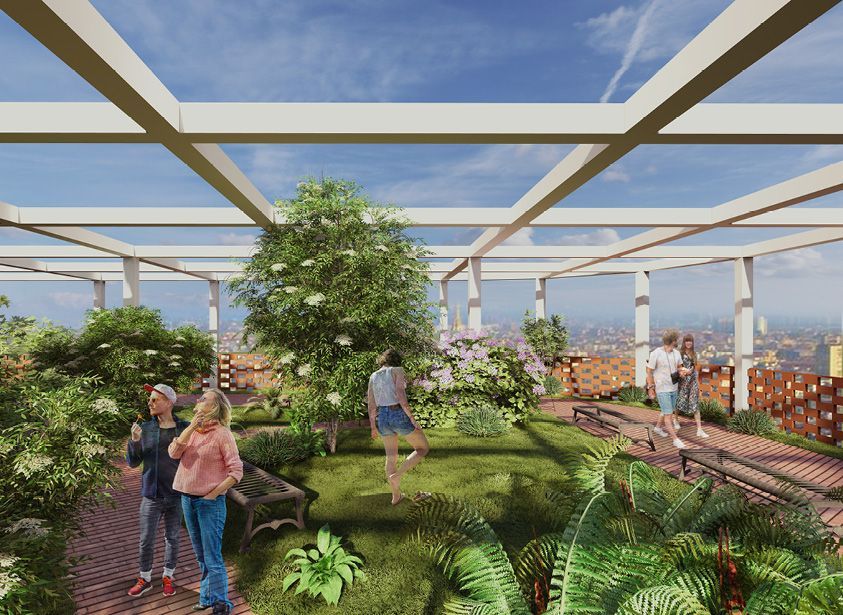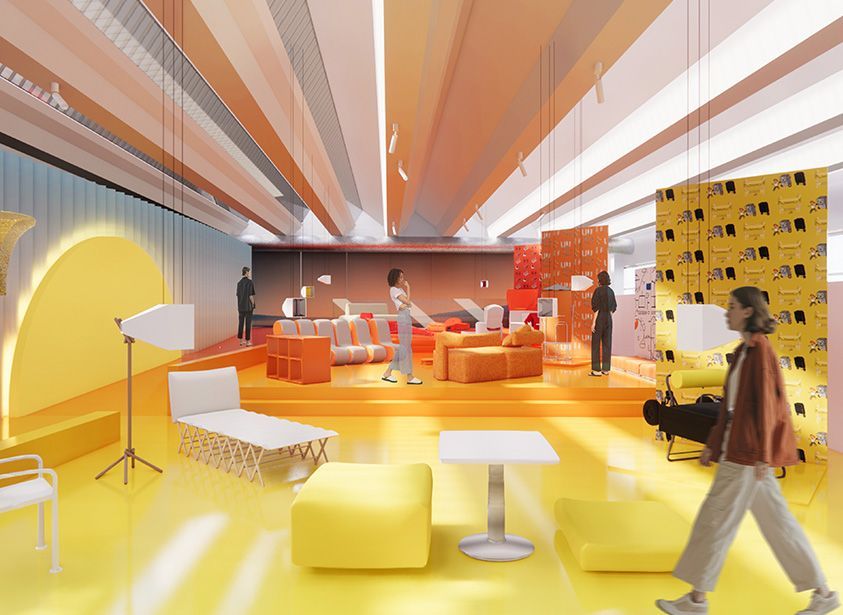Yves Béhar at Domus Academy’s UNFOLD 2025

Designer Yves Béhar revisited 25 years of fuseproject with an exclusive lecture at Domus Academy’s UNFOLD 2025. Read all about it!
On the occasion of Milan Design Week 2025, as part of the events of Domus Academy’s UNFOLD, celebrated designer Yves Béhar delivered a lecture that was as much a retrospective as a call to action. Marking 25 years since founding fuseproject, his San Francisco-based studio, Béhar walked the audience through a legacy defined by “firsts” that reshaped industries. From the pioneering One Laptop Per Child initiative that aimed to democratize technology for education, to Samsung’s Frame TV that redefined the aesthetic of electronics in the home, and the Jambox, the first mass-market Bluetooth speaker, fuseproject has consistently operated at the intersection of innovation and social purpose. Each of these projects exemplified not only technical ingenuity but also a commitment to accessibility, usability, and emotional resonance. Through these milestones, Béhar established fuseproject as a hub for design that seeks not just to invent but to serve.
In recent years, Béhar has redirected his focus toward domestic spaces, seeking to infuse everyday environments with the same depth of intention found in his tech and healthcare work. This return to the home has been catalyzed by his new studio in Lisbon, where a more grounded and tactile approach to design is taking shape. At Milan Design Week, he showcased a series of collaborations that exemplify this shift. His work with Zanat, a Serbian furniture maker celebrated by UNESCO for its preservation of traditional hand-carving techniques, revealed an elegant balance of heritage and innovation. With Laufen, a Swiss company known for its advanced bathroom solutions, Béhar introduced projects that challenge the carbon-intensive norms of ceramic manufacturing. Notably, he presented the world’s first CO₂-neutral ceramic production line, powered entirely by a solar farm and employing electric kilns—a revolutionary move in a traditionally fossil-fuel-dependent industry. These efforts suggest a broader philosophy: meaningful change begins at home.
The global pandemic cast a spotlight on the emotional and psychological needs of home dwellers, prompting designers to reconsider the role of furniture in fostering connection. Béhar responded with “Peaks,” a reconfigurable sofa concept developed during this period of social distancing. Modular yet cohesive, its triangular segments are designed to stay together, eliminating clutter while allowing endless rearrangements. The concept is rooted in social flexibility: encouraging conversations, gatherings, or solitary relaxation without the permanence or rigidity of traditional seating. While not the central theme of his lecture, the piece was emblematic of Béhar’s sensitivity to the human condition. It served as a reminder that thoughtful design can respond to collective experiences, fostering comfort and connection in times of uncertainty.
Throughout his talk, Béhar repeatedly returned to the present cultural atmosphere—one marked by anxiety, distraction, and a sense of helplessness in the face of global crises. Rather than retreat from these conditions, he framed creation as a form of resistance. For him, design is not just a profession but a superpower that allows individuals to reclaim agency in a chaotic world. This philosophy imbues each of his projects with a sense of urgency and optimism. He spoke to the responsibility of designers to inject meaning, beauty, and purpose into the products and systems that shape daily life. In a time of negativity and fear, Béhar’s message was clear: to create is to push back against despair.
As artificial intelligence becomes increasingly integrated into daily life, Béhar has taken a distinctive stance on its role in design. Rather than focusing solely on software or interfaces, he emphasized the importance of embodiment—the idea that AI should have a tangible, emotionally resonant form. One of the key examples he presented was LEQ, a voice-activated companion created for older adults facing loneliness and reduced mobility. Unlike conventional digital assistants, LEQ engages users in light conversation, encourages physical activity, and promotes social connection through subtle prompts. Its physical presence, combined with a calming design language, allows it to blend seamlessly into domestic spaces while fulfilling an emotional need. For Béhar, designing with AI is less about automation and more about augmenting the human experience.
Another of Béhar’s AI-driven creations is Moxie, a robot developed specifically for children on the autism spectrum. This companion aims to support emotional development through a combination of projected facial animations and responsive gestures. By avoiding the mechanical rigidity of traditional robotics, Moxie presents a friendly and accessible interface that children can relate to more intuitively. Its non-threatening appearance and ability to model emotional expressions create a safe learning environment. Though originally designed for neurodivergent users, Moxie has found a wider audience due to its universal appeal as an empathetic and engaging presence. In presenting Moxie, Béhar illustrated how deeply inclusive design can extend its benefits far beyond its intended audience.
Béhar also revisited the development of the SNOO, a robotic bassinet co-created with pediatrician Dr. Harvey Karp. Designed to help infants sleep more soundly while reducing stress for parents, the SNOO uses gentle motion, white noise, and a secure swaddling system to replicate the conditions of the womb. Initially met with skepticism due to its futuristic approach, the device has since gained medical recognition and is now FDA-approved as a tool for reducing the risk of SIDS. It is also in use in hundreds of hospitals across the United States. The SNOO stands as a testament to Béhar’s belief in technology that serves a critical need while respecting the nuances of human care and development.
In a time of growing environmental concern, Béhar has also explored the use of sustainable materials that challenge conventional production methods. In partnership with Forust, his team developed a method to 3D print wood using waste byproducts like sawdust and lignin. The result is a material that behaves and feels like natural wood but is made entirely from recycled sources. This process eliminates the need for binders or chemicals, drastically reducing its ecological footprint. The pieces retain the warmth and tactility of traditional craftsmanship while showcasing the potential of digital fabrication. Through this work, Béhar underscores that sustainability and beauty are not mutually exclusive—and that the future of craft lies in harmonizing nature with innovation.
Béhar’s perspective on sustainability is grounded in a realistic understanding of human nature. Acknowledging that the brain is wired for immediate gratification rather than long-term planning, he advocates for solutions that align environmental benefit with sensory delight. This philosophy was reflected in several projects, including one with The Ocean Cleanup. Partnering with this youth-founded organization, Béhar’s team helped design sunglasses made from plastic waste collected from the Pacific Garbage Patch. Each purchase funded the removal of a significant quantity of ocean plastic, transforming waste into value. The success of the campaign proved not only the viability of recycled materials but also the public’s appetite for purpose-driven products. In Béhar’s view, climate solutions must be emotionally compelling if they are to succeed.
Continuing his focus on the ocean, Béhar also shared his involvement in Proteus, an ambitious underwater research habitat led by Fabien Cousteau. Designed as a modular, long-term base for marine scientists, Proteus addresses the logistical challenges of oceanic research—from pressure and humidity to isolation and safety. With two floors and facilities that encourage exercise and social interaction, the habitat enables extended stays that significantly accelerate data collection. Like the International Space Station, it offers plug-and-play compatibility for research institutions, fostering collaboration and innovation. For Béhar, the project exemplifies how thoughtful design can support scientific exploration while maintaining livability and human-centeredness.
One of the most ambitious ventures Béhar discussed was Telo, a next-generation electric pickup truck designed from scratch. Unlike many EVs that retrofit existing combustion models, Telo represents a fundamental rethinking of what a truck can be. With a compact footprint similar to a Mini Cooper but the utility of a full-size pickup, Telo challenges assumptions about size, efficiency, and performance. The design pushes the wheels to the corners, maximizing interior space and enabling new configurations like an extendable truck bed via a mid-gate. Materials include cork, ocean plastics, and recycled textiles, integrating sustainability into every aspect. Telo reflects Béhar’s belief that sustainable products must not only match but exceed the desirability of their predecessors.
As the lecture drew to a close, Béhar articulated a philosophy that underpins all his work: sustainability must be joyful. If a product is to shift behavior, it cannot rely on guilt or sacrifice alone. Instead, it must invite users through beauty, functionality, and emotional resonance. His body of work, from smart robots to eco-friendly furniture, illustrates that design can be both aspirational and responsible. In this framework, innovation is not just about problem-solving but about creating new pathways to delight and meaning.
Closing on a powerful note, Béhar urged the audience to recognize design as a practice of intent. Amid distraction and despair, the choice to create is itself a defiant act—a way to carve meaning out of chaos. He encouraged young designers not to lose themselves in outrage but to focus their energy on building. Whether working on AI, climate solutions, or furniture, what matters most is clarity of purpose. In Béhar’s vision, the future depends not just on new technologies but on the integrity and intent behind their creation. This, he suggested, is the real power of design: to envision, shape, and ultimately build a better world.





